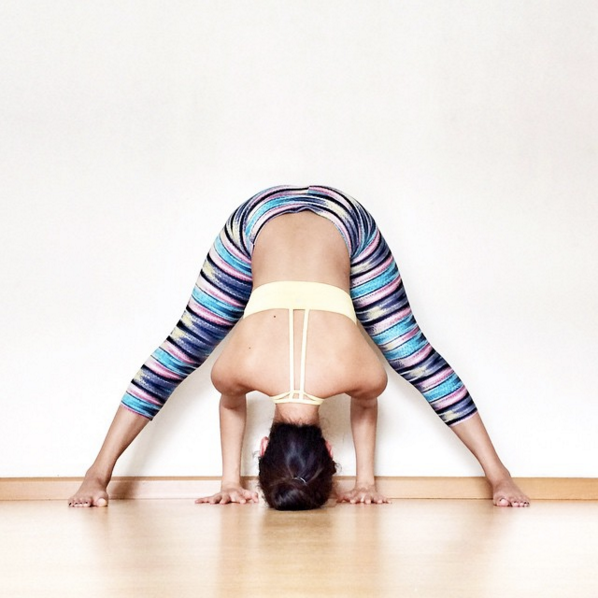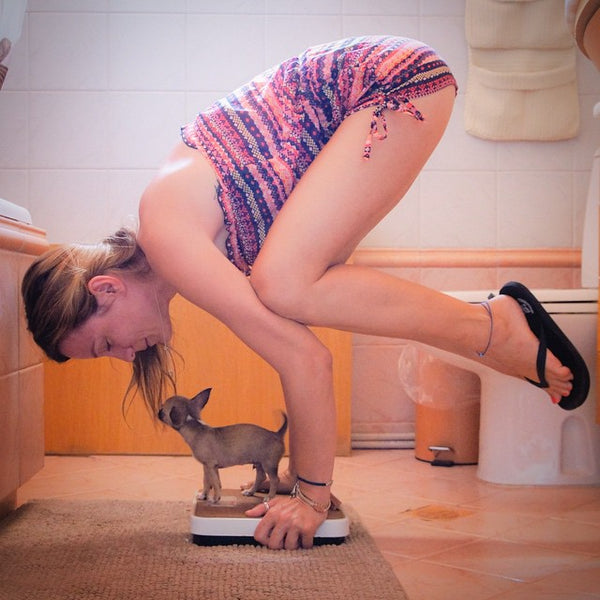Do you have difficulty getting into and staying in tree pose? Try these simple tips and watch your tree bloom!

Vrksasana or tree pose is one of the most beautiful, serene, symbolic and recognizable poses in yoga. It is also one of the oldest known yoga poses and is depicted in ancient artwork. [caption id="attachment_19652" align="aligncenter" width="321"]

Arjuna's Yajna, Mahabalipuram - Wikipedia[/caption] Trees are majestic, serene and grounded beings and we want to do our best to emanate these qualities when doing our tree pose. Vrksasana can be deceptive because it looks easy but as a balancing pose, it can present many different challenges. Here are our top 5 tips to perfecting your tree!
- Foundation, foundation, foundation.
In case you didn’t get it, we said it thrice! The most important factor is foundation; mental and physical. The mental foundation for this pose is knowing the technicalities behind it. We found these brief tutorials very straightforward and helpful.
The actual bodily foundation for this pose is the base or if you will, the trunk of your tree. The standing leg is in Tadasana, mountain pose. So, starting from the perfect Tadasana, belly and bottom tucked in, long spine and neck, slightly shift your weight to the grounded leg, altering your Tadasana as little as possible. Then raise the right leg and place the right sole of the foot down on the selected point on the left leg, be it the inner thigh, calf or ankle (always avoiding the knee), as best as you can without moving the rest of the body. Keeping a steady trunk or foundation is the first step to getting a grounded, steady, stable tree.
- All about the gaze.
By far the best tip for perfecting this pose is the drishti, the focal point. Select a point on the wall or somewhere in front of you (preferably a non-moving point so the rear end of the person struggling in front of you won’t be the best choice). To prove the point of how important the gaze is to this pose, try closing your eyes while in it. How long can you stay in Vrksasana with your eyes closed? (We averaged 1.9 seconds.)
- Flesh is best.
This is a non-conventional tip but we found that trying to gracefully maintain your balance in tree pose will be greatly hindered if you are too busy trying to stop your foot from slipping down your standing leg. Baggy or harem pants aren’t the best for beginner yogis in this pose and you don’t want the foot to slip down your leg taking your trousers with it giving your fellow yogis an eye full. Bare legs and obviously sockless feet (wearing shorts or tight pants that aren’t going anywhere such as leggings) really help you to concentrate on the structural and inner element of the pose instead of external factors. [caption id="attachment_19654" align="aligncenter" width="612"]

http://instagram.com/p/d9hXzcs45R[/caption]
- Hands on.
The arms and hands play an important role in the steadiness of our tree pose. All too often we rush to put our hands in Namaste above our heads without first making sure we have steadied our foundation. Take it slow, and once you feel steady, together with the breath, lift the hands straight above the head together in Namaste. Separating the arms and fingers, long and straight like branches also helps with the balance as we can use the arms as balancing tools. Alternatively, you can rest your arms down by your side in chin mudra as this can also help with the balance. [caption id="attachment_19657" align="aligncenter" width="306"]

@amyelandry[/caption]
- Need extra help?
No problem. Using these simple techniques if you are still having difficulty with your tree will eventually help you get comfortable with tree pose and before long, you won’t need the extra assistance.
- Stand near a wall and place one hand on the wall and the other hand straight above your head.
- Alternatively, try standing near the wall, with your hands above your head in Namaste with only your elbow touching the wall for assistance. Every so often try to slightly lean away from the wall, balancing on your own.
- You can also use a chair, resting one hand on the back of the chair with the other straight above your head or down by your side in chin mudra.
[caption id="attachment_19656" align="aligncenter" width="640"]

@thehealthyyogini[/caption] Use these tips and before long, you bet your asana you will be able to stay in steady, peaceful Vrksasana for 25 breaths making you the tree master!
 Vrksasana or tree pose is one of the most beautiful, serene, symbolic and recognizable poses in yoga. It is also one of the oldest known yoga poses and is depicted in ancient artwork. [caption id="attachment_19652" align="aligncenter" width="321"]
Vrksasana or tree pose is one of the most beautiful, serene, symbolic and recognizable poses in yoga. It is also one of the oldest known yoga poses and is depicted in ancient artwork. [caption id="attachment_19652" align="aligncenter" width="321"] Arjuna's Yajna, Mahabalipuram - Wikipedia[/caption] Trees are majestic, serene and grounded beings and we want to do our best to emanate these qualities when doing our tree pose. Vrksasana can be deceptive because it looks easy but as a balancing pose, it can present many different challenges. Here are our top 5 tips to perfecting your tree!
Arjuna's Yajna, Mahabalipuram - Wikipedia[/caption] Trees are majestic, serene and grounded beings and we want to do our best to emanate these qualities when doing our tree pose. Vrksasana can be deceptive because it looks easy but as a balancing pose, it can present many different challenges. Here are our top 5 tips to perfecting your tree!
 http://instagram.com/p/d9hXzcs45R[/caption]
http://instagram.com/p/d9hXzcs45R[/caption]
 @amyelandry[/caption]
@amyelandry[/caption]
 @thehealthyyogini[/caption] Use these tips and before long, you bet your asana you will be able to stay in steady, peaceful Vrksasana for 25 breaths making you the tree master!
@thehealthyyogini[/caption] Use these tips and before long, you bet your asana you will be able to stay in steady, peaceful Vrksasana for 25 breaths making you the tree master!



